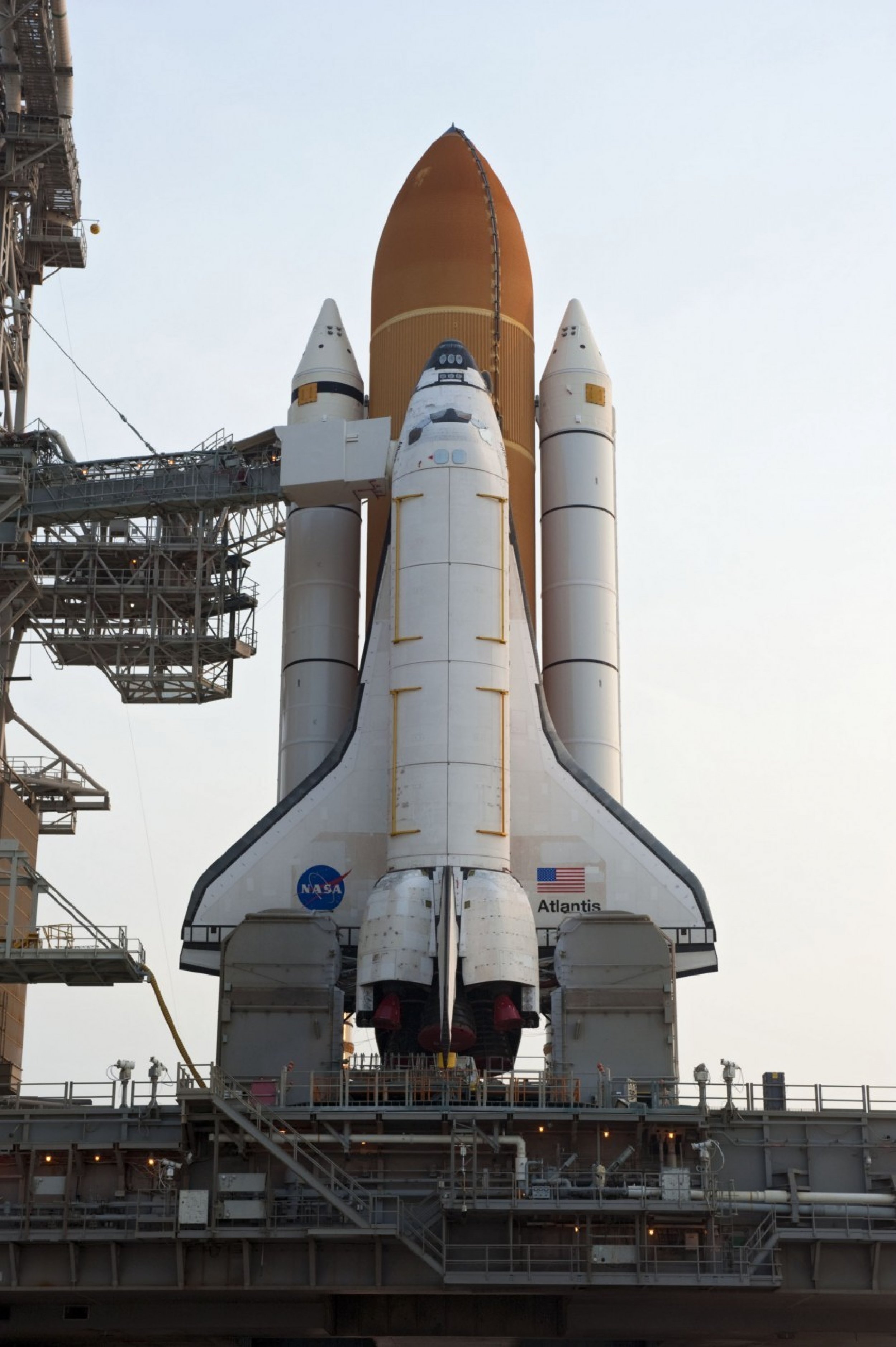NASA Shuttle Atlantis Ready for Final Flight; To Carry Two iPhone 4s to ISS
NASA space shuttle Atlantis is getting ready for its targeted July 8 launch to the International Space Station, which will end the 30-year space shuttle program. The shuttle is expected to launch on July 8 at 11:26 am EDT.
The trip will last for 12 days, during which 8,000 pounds of spare parts will be delivered to the International Space Station. The shuttle will also test whether it is possible to robotically refuel existing orbiting satellites.
The crew members for the STS-135 mission are: Commander Christopher Ferguson, Pilot Douglas Hurley and Mission Specialists Sandra Magnus and Rex Walheim.
The four astronauts are undergoing prelaunch training at Launch Pad 39A of NASA's Kennedy Space Center in Florida. They practiced emergency escape procedures and inspected the payloads inside Atlantis' cargo bay. Later they received operations and payload briefings inside Kennedy's Launch Control Center, NASA said in a statement.
Before beginning their training this morning, the crew members answered questions from the news media during a live NASA TV broadcast from the launch pad. Reflecting on the significance of this final space shuttle mission, Commander Ferguson said, I don't think that the full magnitude of the moment will really hit us until the wheels have stopped on the runway. I'm not sure words will really be able to capture for the crew and for the entire shuttle workforce just how much the shuttle program has meant to us for the last 30 years.
On Wednesday, the Space Shuttle Program held its program-level Flight Readiness Review at NASA's Johnson Space Center in Houston. The team recommended a go to proceed to the agency-level review next Tuesday, with a targeted July 8 launch date for the STS-135 mission to the International Space Station.
Technicians at the pad have completed their high-tech X-ray scans of the Atlantis' external fuel tank stringer support beams. The technicians will be scanning the bottoms of the shuttle's 21-foot long beams. Other technicians replaced the main fuel valve in space shuttle main engine No. 3 yesterday. Retesting of the valve is up next.
Apart from the spare parts to be carried to International Space Station, the shuttle will transport two Apple Inc.'s iPhone 4 to the U.S. National Laboratory. The iPhones will probably make their journey home on a Russian Soyuz vehicle in the fall of 2011.
Odyssey Space Research said it has planted a custom-made iOS app, called SpaceLab for iOS, on the iPhones to conduct four experiments that are Limb Tracker, Sensor Cal, State Acq and LFI. The app, which replicates the experience and tasks affected by the crew members on the app, is also available for download on App Store for $0.99.
Limb Tracker is a navigation experiment which will involve taking photographs of Earth and matching an arc to the horizon through manipulation of an overlay. The experiment will result in an estimate of altitude (height above the surface) and 'off axis' angle, a measurement of the angle of the image with respect to the Earth's center.
Another experiment which involves the gyroscope and accelerometer is called the State Acquisition. Also in the fray is an experiment to test the effect of radiation on the iPhone.
Take a glimpse of space shuttle Atlantis with its crew:







© Copyright IBTimes 2024. All rights reserved.





















